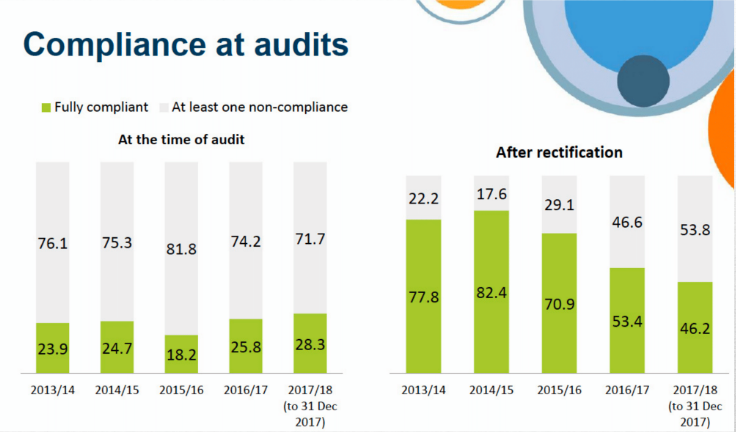When you look at the statistics published by ASQA, and the results from its regulatory work, they show the darkest face of VET. Since AQTF 2001 was implement, I wonder if we have been stuck in a continuous cycle of simply raising awareness and checking the compliance box.

Most of the work around compliance has been about the regulation: “The VET Quality Framework”, and not about what we are regulating: “Competency-based training and assessment practices”. But the true behaviour change we need, requires activities to help VET practitioners to visualise and build skills required to implement a complex competency-based training and assessment system, not legal practitioners working to comply with legal instruments.
We failed to create formal or informal opportunities to build and apply principles of instructional design that supports competency-based vocational education relevant to the Australian VET environment.
Consultations and other consultative approaches have not successfully exposed potential pressure points within our system, neither explored competing perspectives of different VET players that occur in real life. Instead, policy makers, regulators, training providers and industry continue to work in isolation.

How we communicate the core message
Compliance is a difficult issue to tackle because it is about performance and, therefore, it depends heavily on communication and practice.
Internal communication within RTOs
Managers need to play a key role in the effective communication of these performance objectives. Simplifying current regulatory statements, providing clear and relevant points about abstract policies and showing how those policies apply in real-life situations, are other ways to promote better understanding.
Individuals working in the sector need to build the skills required to interpret regulatory compliance and implement complex technical processes. Such training must be contextualised into the RTO’s environment this can be done by using relevant and real examples, instead of using “ideal world” examples which pose the risk of disbelief.
The discussions about compliance must value the diversity of perspectives and experiences within the sector, incorporating them will provide a frame of respect and sensitivity around vocational training and education issues; it can also promote greater efficiencies within the system. The notion of “this is how we do it” from one side, or “this is how it’s always been done” from the other side, can be a blocking mechanism to effective change and growth as a sector.
It’s no secret—countless research studies have demonstrated that behaviour change unfolds in phases and takes time, consistency and relevant interactions. Changing the behaviours described in ASQA’s report will not be the exception.
By providing open communication channels and relevant training, RTO managers can help staff (including trainers) understand the effect of their decisions and the difference they can make to achieve quality outcomes and compliance.
The above rationale can be extrapolated to other players within the system, including the regulators. Issues with inconsistencies and poor performance of ASQA’s auditors, training package writers and policy makers, can be improved by adopting open communication channels and relevant training.
In competency-based vocational education not only students are accountable for their own learning, all stakeholders are accountable for their own performance.





